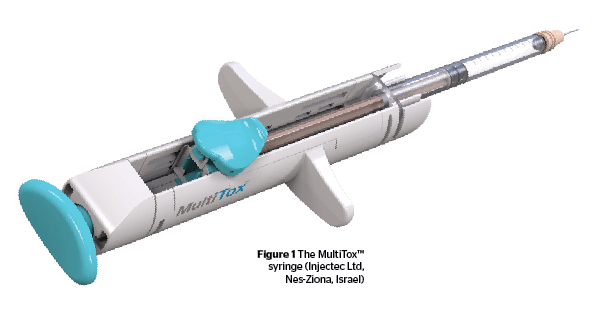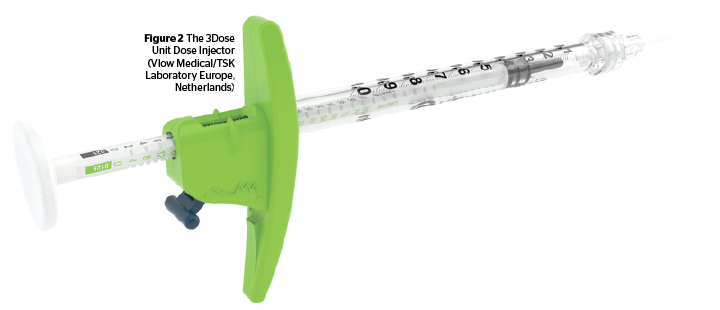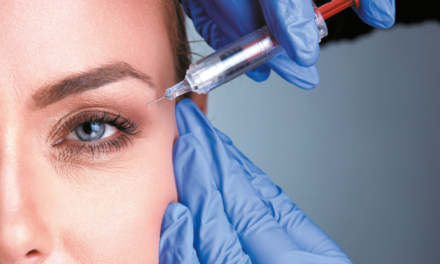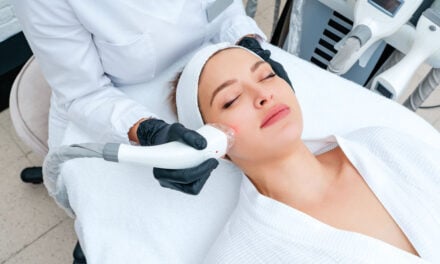Sabine Zenker reports on how disposable injection aids allow practitioners to inject smarter and with greater precision than ever before
Many patients now view botulinum toxin injections (BoNT) as ‘no guilt’ quick fixes. According to the International Society of Aesthetic Plastic Surgery (ISAPS) Global Survey, Botox is now the most popular drug in the field of aesthetics — with more than 4.5 million injections performed worldwide — and is the most frequently requested non-surgical procedure, making up 38.4% of the market1. However, we are currently experiencing a shift in attitude toward such treatments, with patients taking a more conservative approach and expressing a desire for more subtle and ‘natural’ looks. This has been guided by practitioners offering more judicious applications of micro-Botox or ‘sprinkling’ to create a subtle enhancement. So dosing BoNT precisely and in lower units, and in quantities right for each indication, injection site, and each individual patient is key.
Botulinum toxin type A
BoNT/A is approved for a variety of cosmetic and non-cosmetic applications. Most common cosmetic applications are in the treatment of upper facial rhytides and dynamic lines, namely glabellar lines, horizontal forehead wrinkles, and crow’s feet2. In the lower face, botulinum toxin is used to shape the contour, to relax unwanted sad expressions, and to erase unwanted chin dimpling4.
Despite the fact every well-trained practitioner will certainly know and respect the recommended botulinum toxin doses5–7, its use is expanding and dosing goes off-label to effectively treat patients individually8.
Typical on-label dilutions for BoNT/A for aesthetic use are shown in Table 1.
Dosing BoNTA
R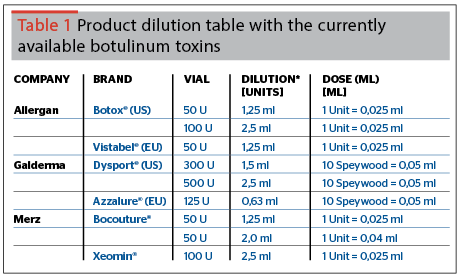
The demand for more subtle results means that clinicians need to ensure they have both the technical ability and technical equipment to deliver BoNT/A precisely and — when it comes to smaller doses — more accurately. Accurate dosing of BoNT/A is especially important not only for efficacy, minimal risk, and the avoidance of any adverse events, but also for reaching the most appealing aesthetic outcome.
There is an increased awareness among practitioners of the inaccuracy of traditional toxin injections due to aspects of the injection equipment used, such as needles and syringes that were never designed for BoNT/A injections i.e. insulin syringes. In the author’s own findings assessing preclinical accuracy of BoNT/A injections using traditional equipment, the author discovered injection doses were up to 20% inaccurate. This inaccuracy does not only come about from the difficult technical aspect of injecting small doses, but also because the millimeter scale of regular syringes is difficult to read and allows for a 10% level of printing inaccuracy even when complying with International Organization for Standardization requirements. The smallest millilitre lines on a scale are those to indicate 0.01 ml. With doses of 0.0125 ml the thickness of the scale’s line is already causing inaccuracy. Standard insulin syringes can’t be used to guarantee consistent and accurate injection amounts, which results in over-delivery and a costly waste of the agent. Such arbitrary measurement will inevitably affect consistency of subsequent treatments, impacting negatively on results. So the lower the injectors go in units or the higher they go in volume/dilution for the BoNT/A, the more difficult it gets to dose the toxin correctly. Additionally, the logistics of any injection situation, such as keeping the patient comfortable and ensuring technical aspects — the correct depth of injection — while managing to inject the right volume is a challenge for any aesthetic practitioner.
Disposable injection systems for botulinum toxin A injections
This is where precise delivery aids have to come into play. Looking at the available equipment, insulin and LDS syringes with either integrated needle (30G) or regular needles of varying size have begun to be replaced by disposable systems with an integrated syringe and needle (Figure 1).
More elaborated and refined, recent systems, designed for BoNT/A injections, take us a step ahead; the disposable 3Dose Unit Dose Injector (©TSK/VlowMedical, Netherlands, Figure 2) is one such example.
What these new breed of injection systems have in common is that — thanks to their innovative technologies — the exact doses of the botulinum toxin to be injected are provided and enable the practitioner to focus entirely on their injection technique. Furthermore, minimal doses are provided with the maximum level of accuracy possible.
3Dose Unit Dose Injector
This disposable injector with a patented clicker system allows for accurate dosing. The unique clicker system of the 3Dose Unit Dose Injector eradicates the need for guesswork by simplifying injection of millilitre units to one click equal to one unit, with audible and tactile feedback per injected unit. This allows for more accurate, consistent, and easier injections of high value toxin and eliminates calculating errors in BoNT units. It is usable with all the FDA approved botulinum toxins — Botox (Allergan, Irvine, ca), Bocouture (Merz Pharmaceuticals, Frankfurt, Germany), and Azzalure (Galderma S.A., Lausanne, Switzerland).
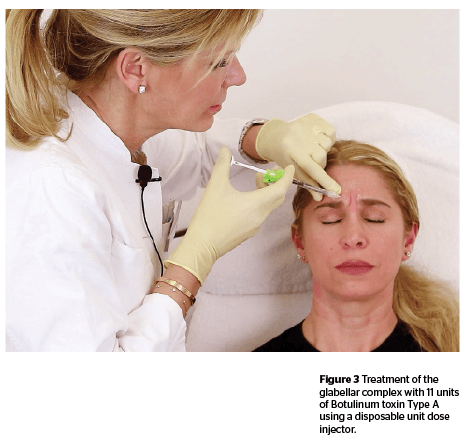
Anecdotally, the author has experienced when using the 3Dose Unit Dose injector in combination with the thinnest needle in the market right now, the so-called ‘mosquito needle’ (©TSK, INViSIBLE NEEDLE™), the treated patients report less discomfort and pain during injections, and the risk of bleeding is reduced during and after injection. Additionally, and thanks to the low dead-space hub in the needle, this equipment allows for product saving. Finally and most importantly, using a injector designed for BoNT/A helps when using smaller doses of toxin, resulting in an individualized, customized relaxation of the mimic muscles and therefore an aesthetically very appealing and natural result.
The challenge for any aesthetic practitioner, the logistics of keeping the patient comfortable and ensuring the correct technique, with correct depth of injection and correct volume, is reduced to moving the plunger click by click. This helps the injector focus on the more important aspect — to deliver the best aesthetic outcome.
Conclusion
Modern technologies for botulinum toxin dosing open up another dimension as they enable the practitioner to effectively deliver an accurate and reproducible dose of toxin. With evermore smaller injectable units of toxin now feasible. The need for accurate delivery is essential, especially when micro-dosing is concerned. For the first time, injection equipment, such as the 3Dose™ Injector, provide the practitioner exact preclinical dosing of BoNT/A. Guesswork, which shouldn’t have any place in aesthetic medicine, is over. Over- or under-injecting is over. Side-effects are reduced to an absolute minimum. As a result, the quality and the overall aesthetic outcome of BoNT/A treatments in aesthetics will improve. Less is more with new botulinum toxin protocols. But from now on, ‘more or less’ is never an option in its delivery.


